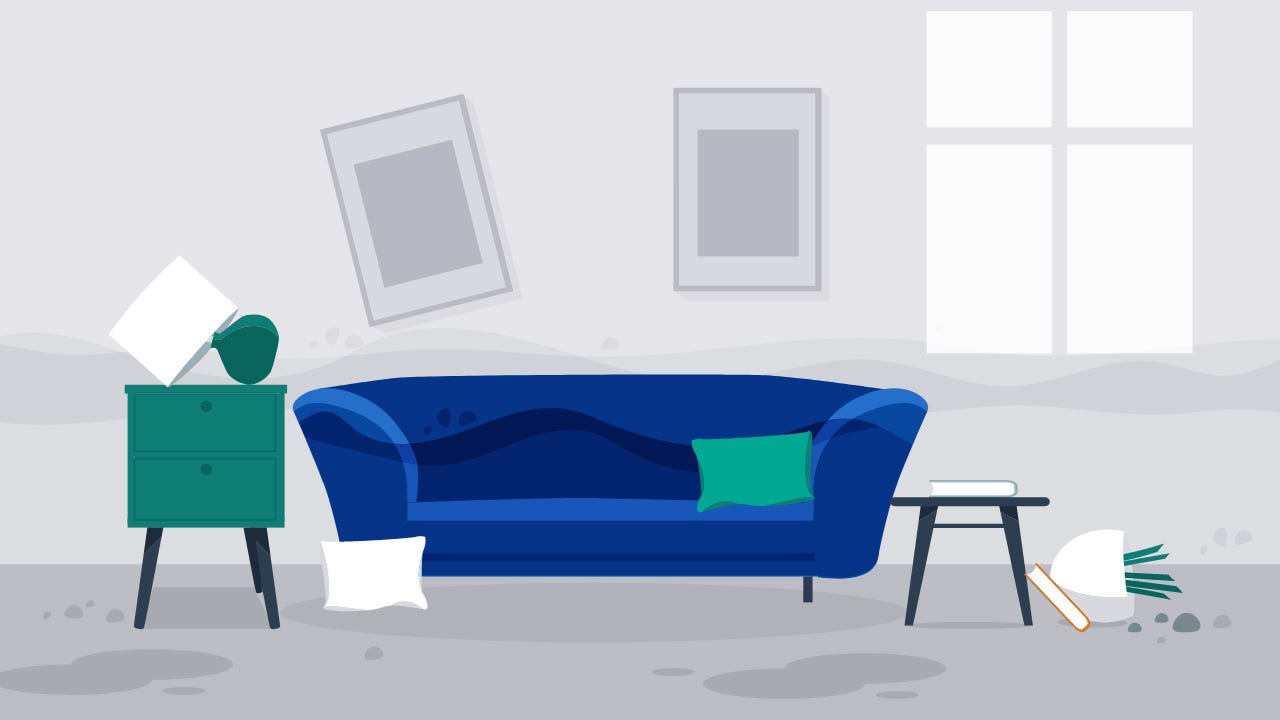Homeowner's Checklist for Water and Flood Damage Cleanup
Here’s what to do after a natural disaster that results in flood damage

The costly effect of water damage
Floods can lead to considerable losses for homeowners. Research from the Insurance Information Institute (III) found that the average flood claim in 2018 stood at $42,580. It’s important to know that flood insurance is not part of a standard homeowners policy. For those that experience flooding, unless coverage was purchased through the National Flood Insurance Program (NFIP), they likely had to shoulder the flood damage cleanup and home repairs out of pocket.
How flood waters can damage your home and personal property
Whether caused by seasonal flooding or an unexpected natural disaster, water damage can lead to significant structural, health and safety issues for your home or business. Standing water can permanently damage belongings like furniture, appliances, electronics and more. Flood waters can also seep into your home’s support structure, weakening and warping wooden framing, beams and flooring.
Beyond physical damage to your home and personal property, flooding can also promote the growth of mold, bacteria and insects, according to the Environmental Protection Agency (EPA). This, in turn, can impact your home’s air quality and lead to a variety of respiratory problems, especially for those who may have asthma or other pre-existing conditions. The longer it takes to start flood damage cleanup, the higher the risk that harmful microorganisms will establish a foothold.
To help you prepare for the worst, we’ve put together a homeowner’s checklist that outlines what you should do following a sudden natural disaster resulting in flood damage.
Your flood damage cleanup checklist
Following a natural disaster resulting in flooding, homeowners should take immediate precautions to protect their personal safety. As soon as possible, all pets and children should be moved to a safe, dry location. Because floodwaters often contain infectious organisms like E. coli, salmonella and shigella, practicing good hygiene is crucial. The Occupational Safety and Health Administration (OSHA) recommends regular handwashing with soap and clean water.
Before you start removing personal items from standing water, you should put on waterproof clothes, safety goggles and waterproof gloves to help prevent possible health issues. Once you’re prepped and ready to go, follow these flood damage cleanup tips published by the EPA:
1. Contact your insurance representative
Always reach out to your insurance company first to discuss your situation and see if there are resources available to help. Even if a loss is not covered, they may be able to help connect you with companies that provide flood damage cleanup, specifically a restoration service that specializes in water damage.
2. Make sure your home is structurally sound
Prior to your flood damage cleanup, it’s important to have your home inspected for signs of structural damage that may pose a risk to your safety. This includes any severe-looking damage to your drywall, hardwood floors, support beams, staircases or foundation. It’s also important to have the integrity of your HVAC equipment checked to ensure it’s not leaking or turned on. All electrical should be switched off before you set foot in standing water to prevent possible electrocution.
3. Remove waterlogged items from flooded areas
The next step is to remove any personal items that have been sitting in water. While some of your belongings can be cleaned, you should throw out any property - waterlogged furniture, electronics, books, etc. - that can’t be completely restored. Before tossing them out, you should photograph and log any personal property that may be covered under your home insurance policy. When in doubt, call your insurance agent for a second opinion. Salvageable property should be moved to a dry area before you start removing water from your basement or lower floors. If your basement is fully submerged, however, you’ll likely need to drain the water first.
4. Dry out your home
After you’ve removed your personal belongings, the EPA recommends opening all windows and doors to allow your home to ventilate naturally. Using a wet vacuum, fans and dehumidifiers can also speed up the flood damage cleanup process, as they will help clear wet rooms of excess moisture. Homeowners should focus on cleaning up pools of standing water first, then move onto damp surfaces. It’s crucial to avoid mixing cleaners and instead use a simple solution of water and germ-killing detergent.
5. Create a repair checklist
Now that your home is starting to dry out and your personal items are safely stored away, the next step is to create a detailed checklist of things that need to be repaired or restored. Keeping an inventory of damaged or lost property is also crucial, as it will help you file an accurate claim against your flood insurance. The EPA recommends focusing on repairs that are vital to your home’s structural integrity or the safety of its occupants.
To learn more about flood insurance or water damage restoration, you can contact our representatives at 800-242-6422. We’ll help you get the coverage you need to protect against floods, natural disasters and other sources of water damage.
Your Policy, Policy Declarations or Amended Declarations in effect on the date of loss is the primary source of reference for your coverage, coverage limits and deductible amounts.
This inclusion of non-Amica companies, products, services or statement herein (“Third-Party Content”) is for general informational purposes only and does not constitute a recommendation or endorsement by Amica Insurance. Policies, views, opinions or positions of Third-Party Content expressed herein are those of the authors and do not necessarily reflect the policies, views, opinions or positions of Amica Insurance. Amica Insurance makes no warranties, expressed or implied, as to the accuracy and reliability of Third-Party Content.
This content may contain helpful tips, explanation and advice. Your use of this information is voluntary and may not be effective in every circumstance. Amica encourages you to use good judgement and put safety first.
For more information on our editorial process and content standard, take a look at our editorial guidelines.